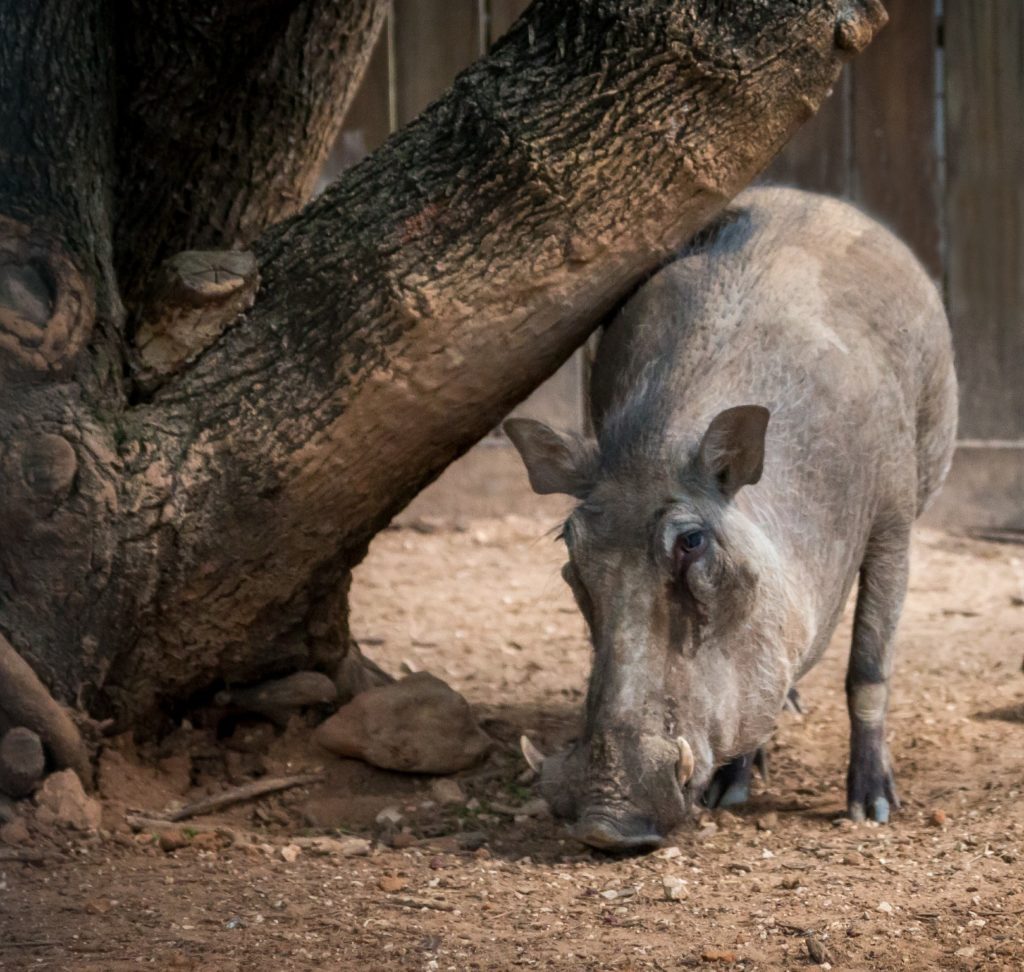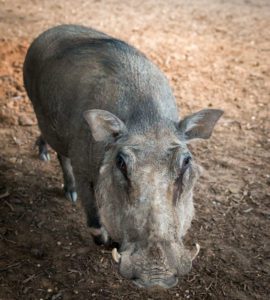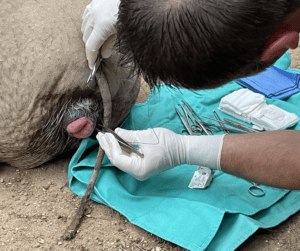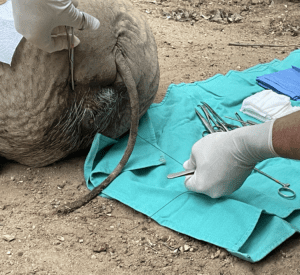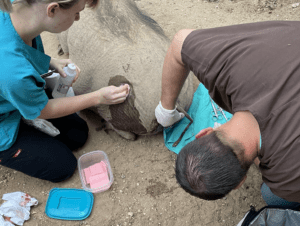Over the last few months, our Animal Care Specialists noticed that our sweet female warthog, Delilah, had developed a slight vaginal prolapse. Because of the fantastic relationship our staff has with Delilah, we were able to give her a safe, non-invasive veterinary exam, led by our veterinarian, Dr. Rierson of Creek View Veterinary Clinic, to get a better understanding of what we were dealing with.
Because the prolapse was small and not consistently an issue, our next step was to run some fecal exams to make sure that we weren’t dealing with a parasite situation that could be resolved with medication. Although our animals are all regularly tested and treated for parasites, we ran a few extra tests just to be sure.
When Delilah’s fecal results came back clean (no pun intended), yet her prolapse was getting worse, Dr. Rierson suggested that we sedate Delilah and perform a Caslick procedure to prevent permanent damage or infection. A Caslick procedure is quite common in large animals, like horses, but is often needed in other smaller species as well.
There are three barriers to infection in the reproductive tract of a warthog: the vulva, the vestibular sphincter, and the cervix. When any of these barriers fails, contamination of the reproductive tract may occur, leading to infection and possible infertility. There are many possible reasons that these barriers fail — physiological abnormalities, age, reproductive injury during breeding, or reproductive injury during birthing, just to name a few. Repair of the injured tissue is often needed to avoid long-term complications or infertility.
A Caslick procedure can correct these issues in a very simple and relatively non-invasive way. It involves putting a few sutures in the upper section of the labia to form a seal and prevent fecal material from introducing possible infection into the reproductive tract.
Dr. Rierson and his veterinary technician arrived at 8am to begin the procedure. Our staff safely shifted Delilah into her bedroom area off-display so that the sedation medication could be administered in a quiet, low-stress environment. The Animal World & Snake Farm Zoo Dangerous Animal Response Team leader, Jarrod Forthman, was able to safely administer the sedatives using a low-power dart rifle. Within minutes of receiving the medication, Delilah was peacefully sedated and ready for her procedure.
With Delilah adequately sedated, it was now safe for Dr. Rierson and the team to enter the enclosure and get to work. They began by thoroughly cleaning her vaginal area. After that, Dr. Rierson pushed the prolapse back inside and put a few special sutures in place to prevent it from protruding out again, making sure to leave enough of an opening at the bottom for urine to pass through. Within minutes, the procedure was finished.
Before reversing her sedative, Dr. Rierson cleaned the area on Delilah’s rump where the initial sedation dart entered so that the small hole in her skin was clean and on it’s way to healing quickly. The team finished by administering an injectable antibiotic to prevent any infection, followed by a sedation reversal to wake up Delilah. They positioned her on her belly with her hooves underneath her so that she was in a good position to stand when she was ready.
After spending the rest of the morning quite groggy, Delilah was back to her normal spunky self in the afternoon. She has since been making a speedy recovery and her sutured area is healing well.
Be sure to stop and see Delilah next time you’re at the Zoo. You can tell her apart from Dexter (our male warthog), because she is a little smaller, has less hair, and only has two “warts” on her face instead of four!

